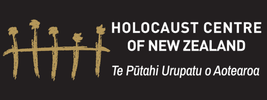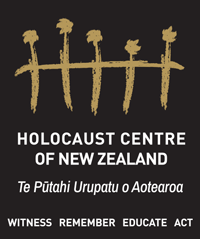NEW ZEALAND AND THE HOLOCAUST - TIMELINE
This timeline provides - at a glance - a chronology of the Holocaust’s main events and New Zealand’s response to them.
1933 - 1938
|
Key New Zealand Events1931: New Zealand Immigration Restriction Amendment Act passes, allowing free entry to British immigrants (either by birth or descent); those of other origins have to obtain entry permits. The Act aims to restrict the entry of 'race aliens' (particularly Jews and Chinese people). Until 1939, Jewish refugees are discouraged from even applying to enter because of perceived difficulties of 'absorbing' them in New Zealand's cultural life without arousing 'antipathy'.
1936-1938: New Zealand rejects 1,731 applications from Jewish refugees. It is estimated that 1,731 applications are declined (and 727 granted), with thousands more discouraged from applying. |
1939 - 1941
|
June 1940: All ‘alien’ immigration to New Zealand stops. With the outbreak of war, New Zealand entry for Jewish refugees is stopped, and the naturalisation of foreign nationals residing in New Zealand is also halted for the war’s duration. Under New Zealand Aliens Emergency Regulations, the police and dedicated ‘alien’ authorities can deport, intern and investigate ‘aliens’ (including Jewish refugees), in order to assess their loyalty.
|
1942 - 1945
|
1942: New Zealand restricts property purchases by ‘aliens’. Regulations are imposed controlling and restricting land and property purchases by ‘aliens’, including Jewish refugees.
7/8/1942: News of Nazi atrocities reach New Zealand. The Evening Post publishes an article ‘Mass persecution – Jews in occupied countries’, reporting ‘1,000,000 out of 7,000,000 Jews in the occupied territories have been murdered.’ From 1942 onwards, NZ newspapers publish photographs and eyewitness accounts of concentration camps and other atrocities. 16/8/1944: News of the gas chambers reaches New Zealand. In an article entitled ‘Camp of Annihilation’ (referring to Maidanek, near Lublin), The Press states that ‘...prisoners from all over the world were gassed and thrown into furnaces which could incinerate 1400 bodies daily’ 1945: New Zealand Jewish community requests the Government lift war time restrictions on immigration, naturalisation, and land and property purchases by refugees. The Aliens Emergency and Aliens Land Purchase Regulations are revoked, though non-British subjects are still required to register with the Police. 1945: New Zealand Government receives reliable official information regarding the existence of gas chambers and other atrocities. 1945: Naturalisation resumes, but New Zealand continues its pre-war policy of limiting Jewish immigration, in spite of efforts by academics and groups such as The Quakers and League of Nations Union. 1945: A Government Select Committee is set up to consider increasing New Zealand's population – mainly through British settlers. April/45: NZ merchant ship TSS Monowai sails from England for Odessa on the Black Sea carrying 1,600 Soviet citizens. The ship returns with Jewish Holocaust survivors from Western Europe - including Otto Frank, Anne’s father. May/45: NZ troops capture Trieste. Prior to the liberation, German troops abandon the death camp at San Sabba, destroying the gas chamber. 1947-1949: New Zealand admits over 4,000 displaced people from camps in Europe. NZ selectors discriminate against Jewish refugees in the camps, selecting as many 'Balts' as possible (unlike Jews, Baltic people are seen to share some similar characteristics to desirable British settlers). New Zealand's discriminatory selection takes place despite International Refugee Organisation rules against discrimination on ethnic grounds and specific groups. After 1948, the discrimination is justified by Government officials on the basis that displaced Jewish people can go to Israel.
|


